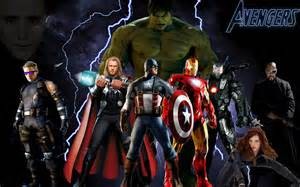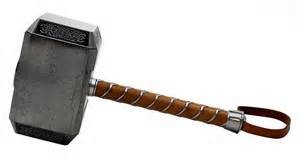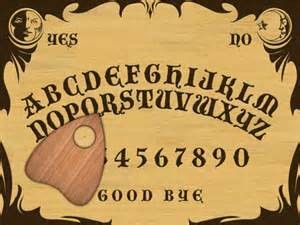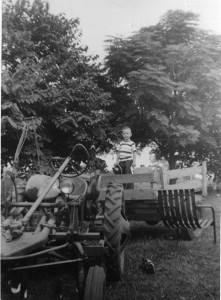A DYNAMIC DUET
 So the first half of my Avenger ailment is simple: a kind of cantankerous geriatric resistance to the laws of probability, feasibility, possibility, rock-a-bility being not just stretched or suspended but shattered (or ignored); a hankering for sustainable shape, flexible wit, a vision (however winkingly presented) of a time and place where melodrama and pyrotechnics do not eclipse cause and effect. And well, I should say this: a hunger for fresh humor. The BBC The Avengers is funny, stylish, a spiffy spoof dominated by Patrick McNee and Diana Rigg, perhaps as mischievous a comic partnership as TV has given us. The show, at its peak, was kin to Get Smart, The Man from U.N.C.L.E. and I Spy, but rhetorically more sophisticated, as if Noel Coward and Doyle might have collaborated. Or in some cases (the episode “The Joker,” for instance) written by Harold Pinter during his “Dumbwaiter”/ “Birthday Party” period.
So the first half of my Avenger ailment is simple: a kind of cantankerous geriatric resistance to the laws of probability, feasibility, possibility, rock-a-bility being not just stretched or suspended but shattered (or ignored); a hankering for sustainable shape, flexible wit, a vision (however winkingly presented) of a time and place where melodrama and pyrotechnics do not eclipse cause and effect. And well, I should say this: a hunger for fresh humor. The BBC The Avengers is funny, stylish, a spiffy spoof dominated by Patrick McNee and Diana Rigg, perhaps as mischievous a comic partnership as TV has given us. The show, at its peak, was kin to Get Smart, The Man from U.N.C.L.E. and I Spy, but rhetorically more sophisticated, as if Noel Coward and Doyle might have collaborated. Or in some cases (the episode “The Joker,” for instance) written by Harold Pinter during his “Dumbwaiter”/ “Birthday Party” period.
In a signature moment the episode called “From Venus with Love,” the intrepid Steed dives into an open grave to escape a laser beam, which has managed to decapitate a funerary stature and send the loose stone head falling into the gaping grave. When Steed rises back into view, he is, in pensive mode, holding the statuary noggin in his palm and gazing eye-to-hollow-socket at the stone visage. One sidelong gaze at the camera, and that’s it. The writers know he doesn’t have to say “Alas, poor Yorick!” or provide any other prompts. The audience is trusted to “get it” or not, and the plot moves on. I also love the appearance in one episode of a surly gamekeeper is named Mellors, not to mention the discourse (same episode) on rose poems, including Herrick’s.
I know it’s unfair to compare these two pop phenomena on the basis of a shared name, and I should also admit that the TV show can be as goofy as the Marvel movies. In fact, the best scene in Ultron, involving Thor’s hammer as a gauge of macho power (bravo: the Excalibur parallel is unmistakable), seems to belong less to Lee than Albert Fennell and Brian Clemens, creators of the Steed-Peel adventures. In fact, there was an ill-fated film version of the TV show (guess the title) released in 1998 with the usually-adroit Ralph Fiennes as Steed and inimitable Uma Thurman as Peel, not to mention Connery as an evil meteorologist nemesis. A cast of sharp, brisk cosmopolitans costumed and equipped (Steed’s bowler, brolly, carnation, bon mots and joi de vivre; Peel’s effortless beauty, snazzy wardrobe, acerbic wit, and even a touch of her arsenal of impish gazes). But the film didn’t much work. It was almost impersonation, rather than acting, though as watchable with popcorn and soda as Josh Whedon’s effort. Throughout, it appeared that the producers had attempted to inflate a TV hour into a feature film.
 What is it about the “cult classic” (enter its internet world at your peril) that so charms someone like me, who is no anglophile and would normally prefer the Eastwood of Unforgiven or the Connery/Bond version of mayhem and wit to the amateur anthropologist/industrial magnate/judo/society diva Mrs. Peel and the dapper Steed (whose brand of unflappability and bemusement seems to me the model Roger Moore was aiming for with his Bondemeanor)? Steed and Peel can’t fly, fling vintage Bentleys around or speak the King’s tongue with aliens, though they often ride about in one of the above (when not in Emma’s Lotus or go-cart). Sexuality between the principals enters the story only as innuendo and never develops beyond that, though never quite disappears. The number of bodies that mount up as P and S attempt to prevent espionage, destabilizing industrial monopoly and mass scale mind control is, well, euphemistic, by Lee-Whedon standards.
What is it about the “cult classic” (enter its internet world at your peril) that so charms someone like me, who is no anglophile and would normally prefer the Eastwood of Unforgiven or the Connery/Bond version of mayhem and wit to the amateur anthropologist/industrial magnate/judo/society diva Mrs. Peel and the dapper Steed (whose brand of unflappability and bemusement seems to me the model Roger Moore was aiming for with his Bondemeanor)? Steed and Peel can’t fly, fling vintage Bentleys around or speak the King’s tongue with aliens, though they often ride about in one of the above (when not in Emma’s Lotus or go-cart). Sexuality between the principals enters the story only as innuendo and never develops beyond that, though never quite disappears. The number of bodies that mount up as P and S attempt to prevent espionage, destabilizing industrial monopoly and mass scale mind control is, well, euphemistic, by Lee-Whedon standards.
Panache – there, I’ve said it. It means, of course, “dash; swagger; verve,” but it’s ripped from the Latin for a bunch of feathers, as in a helmet plume. Emma the feather, John Steed the helmet (he’s former Special Branch, after all, a former major). But sometimes it’s the reverse, as they’re both wily and deft (which is both adroit and daft), durable and adaptable. Their gestures and inflections have texture, subtexture. At their best, even in the broadest jest, they’re artful.
And there’s the matter of form. The last refuge of scoundrels, or just an affection for symmetry and ritual? I won’t say that an episode of the TV Avengers works like a sonnet, that “moment’s monument,” but it has its demanding contours, regimen, dynamic, a reliable framework within which surprises may happen.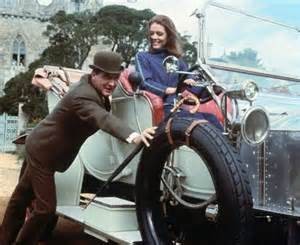
Here’s the drill. 1. Opening titles with champagne and bongo beat, close-ups of stars, saucy music, zero in on Steed’s accoutrements and boutonniere, Peel’s eyes and revolver. 2. A brief prologue, usually revealing in flagrante felony some naughty sociopath, quack scientist or Official Secrets thief, maybe a hypnotized giant striding with unswerving menace. 3. Standard bars of series anthem with title of episode (like “A Room Without a View,” “Mission . . . Highly Improbable,” “The Winged Avenger”) and (in half the technicolor episodes) two quirky sub-captions, such as “Steed Goes off the Rails; Mrs. Peel Finds Her Station in Life.” 4. Peel in her snazzy flat happily painting, sculpting, fencing; in short, busy. Steed appears almost ex nihilo to say, “Mrs. Peel, we’re needed.” In what medium he says this? Surprise, wit, untenable improvisation arise. Business card to skywriting out the window, a toy carrousel with knights who carry notecards. 5.-9. Context, investigation, confrontation, judo, duels of wit, discussion, eureka. All of this involving arcane or acerbic British types. 10. Solution revealed and tossed off with caprice. 11. Piano reprising the intro, then gliding into musical theme with our two contract sleuths riding into the distance in/on horseback, tractor, golf cart, Rolls, hot air balloon, etc. It’s as if, over the years, the final couplet before the end titles (12.) constitutes an essay on vehicular history. All in about 52 minutes.
But I’ve omitted something. Though this be madness . . . . Mischief, yes, but serious mischief. The stories that unfold touch on extrapolations from the science of the time (often nuclear or the psychological sort), earning the series the sub-genre label Spy-fi, or politics (either the ominous cold war assassin chess or the cost of a couple of centuries of imperialism doubling back to bite Merry Olde in the hinter parts). The package may be farcical and formal and sometimes Peter Maxx-goofy, designed with the psychedelic prejudices of the decade, but the undercurrent runs not too shallow, the themes thicker than water, and even when her ensembles are Barnaby, Mrs. Peel is all Dior.
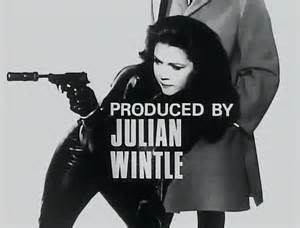 I hope all this fiddle makes it clear: without resorting to the urge to cooperate in mass mayhem, the audience is invited to be in on the jokes, rather than be shocked and awed and July 4 WOWed by “special” effects. All nostalgia and bifocals –shawl over my shoulders, hearth at my back, teacup at hand, hound on my feet – I savor Steed and Peel and remember how they’re precious in the way real estate is: nobody’s making any more of it.
I hope all this fiddle makes it clear: without resorting to the urge to cooperate in mass mayhem, the audience is invited to be in on the jokes, rather than be shocked and awed and July 4 WOWed by “special” effects. All nostalgia and bifocals –shawl over my shoulders, hearth at my back, teacup at hand, hound on my feet – I savor Steed and Peel and remember how they’re precious in the way real estate is: nobody’s making any more of it.
[Note: Lionsgate has released a sixteen-disc set of DVDs containing all 51 of the episodes featuring Diana Rigg. Absolutely addictive, to some sorts of jasper.]


